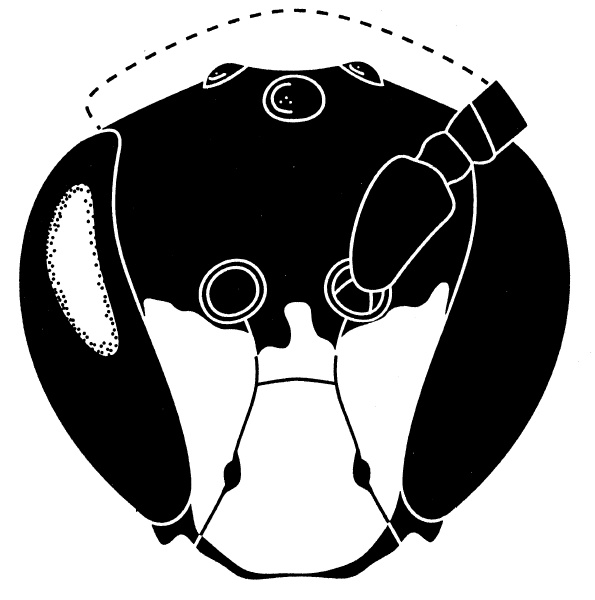Hylaeus in Hawaii

Hylaeus in Hawaii |

|
Hylaeus dimidiatusIslands: HawaiiLocations: Hawaii (Kipuka Alala, Puu Waawaa) Habitats: Montane mesic and dry forest Plants: Chamaesyce Xerces: Hylaeus dimidiatus is a small bee endemic to the island of Hawaii in Hawaii. It is similar to the wet forest species in the dumetorum species group, differing by the larger facial marks and other details. It is known from two historical and two recent collections, and appears to be associated with the tree Chamaesyce olowaluana. Species Profile 
Insects of Hawaii: Small bees with clear wings, propodeum lineately rugose in basal third, nearly smooth to brow. Male with lower face yellow up to level of antennae or very narrowly above, pronotal collar at sides and lobes yellow, tibiae and tarsi marked with yellow. Lacking the scape mark of H. hula, and the mandibular mark of H. kona. Similar to specimens of H. pele with large face marks, but lacking a groove on the underside of the scape and with the propodeum sloping. Female with yellow marks on the lower paraocular areas, pronotal lobes and sides of collar, base of front and mid tibiae, and rather widely banded on hind tibiae; differing from similar species by the evenly spaced pits of the frons and sloping propodeum. This is a rare species apparently restricted to dry to mesic forest in Kona; it and the sympatric H. akoko and H. kona are the only montane species from Hawaii that have never been collected at Kilauea. Despite appearances, genetic data clearly shows it to be the sister species of H. connectens. The identity of the female has been the subject of some confusion. Fullaway (1918) described it from a specimen caught with the male at Kahuku, believing Perkins (1899) original association to be incorrect. Perkins stated (1899) that while he believed his specimen had come from the same place as the male, the locality label had been lost. The latter description appears to match H. pele, which occurs with H. dimidiatus in Kona; it is the only species with a smooth propodeum that has the apical hairs of the metasoma somewhat pale. The specimens on which the two descriptions were based could not be found. Recent specimens have been genetically confirmed, and agree with Fullaways description. Insects of Hawaii Volume 17 
UH/DOD: Hylaeus near military lands 
Other: |

|